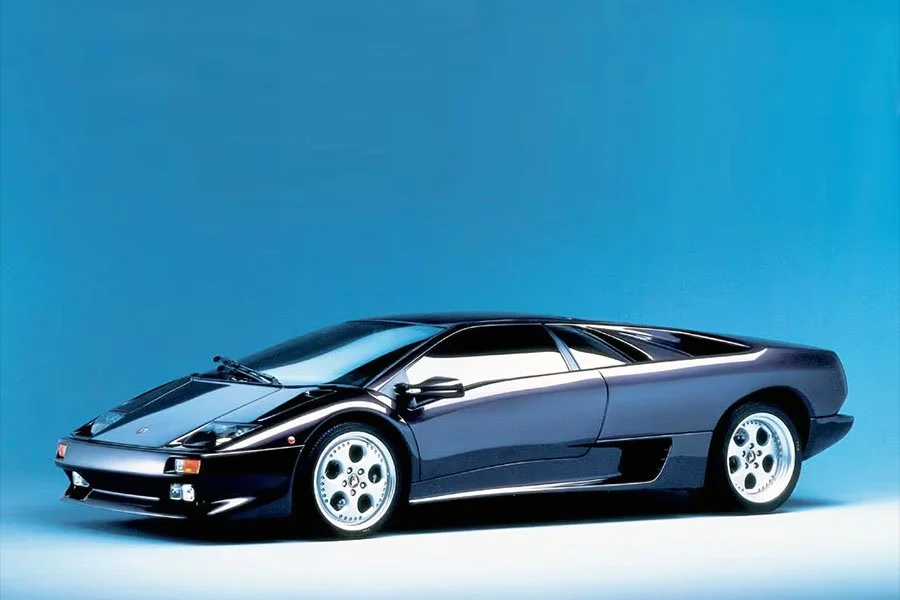Guide: If Only - a Historical & Technical Appraisal of the Lamborghini Cala
/BACKGROUND
Just a few weeks after work had started on a successor for the Jalpa, Automobili Lamborghini was sold to Chrysler.
The company had been saved from bankruptcy in 1980 by Swiss industrialists, Patrick and Jean-Claude Mimram. Under Mimram Group ownership, new models like the Jalpa and LM 002 had been introduced along with a long-awaited bigger engine for the Countach.
Chrysler paid $25m for Automobili Lamborghini in April 1987. This figure netted the Mimram’s a handsome return on their original $3m investment.
Chrysler had ambitious plans for Lamborghini, so the development of both Countach and Jalpa replacements continued unabated.
The Diablo was launched in 1990 and the Jalpa successor (codenamed P140) was set to follow in 1992.
However, the early 1990s recession slashed demand for high end motor cars and hundreds of Diablos were left unsold. In light of this economic turmoil, Chrysler cancelled the P140 in the final stages of development.
With no change of fortune, in November 1993, Chrysler announced they had agreed to sell Automobili Lamborghini to Megatech.
Megatech was a Bermuda-registered holding company for Malaysian investment group Mycom Setdco and Indonesian group V Power Corporation.
Soon after Megatech took over, the P140 project was revived.
Lamborghini sent the first of their two remaining P140 prototypes to Ital Design where the original Marcello Gandini body was replaced with something more contemporary.
The resultant Cala was unveiled at the Geneva Motor Show in 1995. Its name was derived from the Piedmontese dialect of Northern Italy and meant “Look”.
CHASSIS
The P140-based Cala was built on a state-of-the-art bonded aluminium monocoque with a 2522mm wheelbase.
Suspension was via double wishbones with coil sprung damper units and anti-roll bars at either end.
Brakes were ventilated four-wheel discs. Handsome new 18-inch polished wheels were used.
ENGINE / TRANSMISSION
As the old Paolo Stanzani-designed V8 that powered the Urraco, Silhouette and Jalpa was at the end of its development life, the P140 had been equipped with a brand new all-alloy V10 engine.
It featured dual overhead camshafts, four valve cylinder heads and displaced 3961cc. Electronic Marelli engine management was employed and the compression ratio was 10.5:1.
Whereas the P140 engine produced output figures of 372bhp at 7000rpm and 288lb-ft at 5500rpm, the new owners quoted 400bhp at 7200rpm.
The same original six-speed manual gearbox was retained.
BODYWORK
Ital Design was established in 1968 by legendary stylist, Giorgetto Giugaro.
Since the company’s formation, it had executed many renowned creations, among the most significant of which were the Lotus Esprit, the BMW M1 and the Maserati Boomerang / Bora.
The firm’s only prior experience with Lamborghini had been the 1982 Marco Polo, a fastback gullwing-doored saloon concept.
Unlike his great rival, Marcello Gandini, Giugiaro’s designs transitioned seamlessly from the wedge to box era and on to the soft curves that characterised the 1990s.
The Cala’s shapely carbonfibre body was another highly accomplished effort.
Its covered headlights and slatted rear window were reputedly inspired by the Miura, but this was no retro pastiche.
The side profile was dominated by a variety of cooling scoops to include a snorkel intake mounted on each rear fender.
At the back was a fixed rear spoiler and Diablo tail lights housed in reflective shroud.
The partially body coloured targa roof panel contained curved glass panels to allow light into the cabin.
INTERIOR
The cockpit featured an elaborately styled dash. All the instrumentation and switchgear was housed in a wraparound binnacle that was angled towards the driver. A mixture of white and black-faced gauges were selected and an airbag was installed on the passenger side.
Figure-hugging Recaro seats were unique. They were upholstered in a mix of leather and suede to match the door panels and dashboard.
WEIGHT / PERFORMANCE
Like the P140 upon which it was based, the Cala was fully functional.
It weighed 1290kg, had a top speed in excess of 180mph and a 0-62mph time of around 4.5 seconds.
ABANDONMENT
Unfortunately, the Cala never made it into production.
By 1995, sales of high performance exotics were still in the doldrums and Megatech were unable to justify the necessary expense. They instead focused on a couple of Diablo spin offs (to include a Roadster and SV) and began work on a Diablo successor (the Canto).
When Automobili Lamborghini was sold to the Volkswagen Audi Group in 1998, another attempt at a junior model was sanctioned.
Now backed by an industrial powerhouse, this time the project made it to fruition; in 2003, the V10-powered Gallardo was launched.
Text copyright: Supercar Nostalgia
Photo copyright: Ital Design - http://www.italdesign.it
































